Some of the thin-and-light notebooks available these days in stores are 2-in-1 laptops, or convertibles/hybrids, which means that they get some sort of rotating/detachable touchscreen and can be used as standard notebooks, as tablets, or something in between.
Table of Contents
- Recommended 2-in-1 portable laptops (ultrabooks) in 2025
- Lenovo Yoga 9i and HP Spectre x360 14 – the best 2-in-1 convertible ultrabooks
- Microsoft Surface Pro – the ultra-portable tablet format
- Lenovo Yoga 7 2-in-1 – the best mid-range Windows convertible
- Lenovo Flex 5i Chromebook Plus – the best budget convertible
- Asus ROG Flow X13, ProArt PX13 and Flow X16 – the more powerful convertible laptops
- Good-value 2-in-1 hybrids and convertibles
- Sub $500 2-in-1s
- Mid-range 2-in-1 laptops
- Premium 2-in-1 convertible laptops and ultrabooks
- Wrap up – Best 2-in-1 laptops in 2025
However, choosing that one convertible that best fits your needs and budget can prove overwhelming, with the multitude of available choices.
We’ve reviewed hundreds of laptops here on UltrabookReview.com over the last years and gathered our conclusions in this article, in order to simplify this task for you.
We’ve further split the post into three main sections, so you can quickly narrow down your options. We’ll list our recommendations for each class, with links towards more detailed articles and reviews for further research:
- top 2-in-1 portable laptops – the condensed version of this whole article;
- a detailed section of good value 2-in-1 options – for the budget-oriented buyers among you, options priced between $500 and $1000;
- and another detailed section on premium and specialized 2-in-1 ultrabooks – for those of you looking for the best features and traits (includes the best business models, full-size 16 inch designs, powerful gaming 2-in-1s, best options for creators and graphics artists, and so on).
Recommended 2-in-1 portable laptops (ultrabooks) in 2025
Before we get to the actual recommendations, let’s quickly touch on the selection process.
Portability was a major factor in our decision, simply because a 2-in-1 is not just meant for desk use, it will be brought along to work, school, or wherever you’re going, and will be used in tablet mode at least occasionally. However, aspects such as build quality, display quality, ergonomics, typing experience, performance, and battery life were also factored in, and our recommendations had to check all of the right boxes to qualify for this condensed version.
Nonetheless, if you don’t find your answer in this summarized selection, make sure to go through the more detailed analysis in the following two subsections of this article.
Lenovo Yoga 9i and HP Spectre x360 14 – the best 2-in-1 convertible ultrabooks
After reviewing most of the 2-in-1 laptops available in stores, our favorite convertible ultrabooks as of early-2025 are Lenovo Yoga 9i 2-in-1 and the the HP Spectre x360 14.
These are both premium-tier mid-sized 14-inch computers, entirely made out of metal alloys. At around 3 to 3.2 lbs, they’re not the most compact or lightweight device, but offer a compelling balance of build quality, ergonomics, usability, performance and battery life.
The aesthetics are up to each of you to judge, but I tend to favor the Spectre. The Yoga wins in practicality, though, with the extra IO on the sides and the speakers implemented in the hinge, thus always firing towards your ears.
The keyboards are excellent on both, and the displays are 14-inch 16:10 touchscreens with modern 2.8K 120Hz OLED panels.
Performance and general capabilities are similar between the two, both being built on Intel platforms. The Yoga gets somewhat better cooling and a larger battery, 75W vs 68W on the HP. However, the Yoga was transitioned to Lunar Lake 200V hardware for the 2025 generation, while previously was built on Core Ultra H hardware. The Spectre hasn’t received a 2025 refresh yet, so is still available with Core Ultra H specs. Just a heads-up, if interested in sustained performance in potential workloads and demanding applications, Lunar Lake hardware might not be enough for you.
Pricing is quite steep for both these lineups, at $1500+ for the better specced models, but Lenovo tend to offer serious discounts quite often, so there’s a good chance you’ll end up paying less for a Yoga.
All in all, you’d be fine with either of these, and while I prefer the general looks of the Spectre, I lean towards the Yoga 9i as a more balanced and more affordable option. What do you think?
Here are mode details on Yoga 9i, as well as our detailed review.
And here’s what to expect from the Spectre x360 14. Also, for what is worth, HP also offer a slightly more affordable alternative in the newer OmniBook Ultra Flip 12-in-1 14, if the Spectre is not within your budget. That’s another Lunar Lake V design, though, and not quite as nicely made as the Spectre.
Microsoft Surface Pro – the ultra-portable tablet format
While the two above are convertibles and primarily excel as laptops, these here are more compact and portable options primarily made for tablet use, which can be alright notebooks on a flat desk.
The Surface Pro is a stand-alone tablet with an adjustable kickstand on the back. It’s a premium product with a sturdy magnesium shell and a 13-inch 3:2 high-resolution touchscreen on the front face, ports on the sides, and a keyboard folio. The design makes it an awesome tablet both when hold in your hands or for watching movies and presentations, sitting straight thanks to its kickstand.
There are in fact many generation of the Surface Pro, with most offering an IPS display and Intel hardware. However, the latest Surface Pro 11 generation is now a Copilot+ PC running on Qualcomm Snapdragon hardware, and offers an OLED display. It’s still a 3:2 format with touch and pen support.
This latest Surface Pro is also a little lighter than past mode, at .9 kilos (1.97 lbs) for the tablet alone. And despite running on Snapdragon hardware, it’s still not a fanless design.
But how about the laptop experience? You can get a matching keyboard-folio for the Surface Pro, which attaches magnetically to the bottom. It’s available in a few different colors, weighs about .7 lbs (.3 kg), and is a competent typer, with clicky keys, nice feedback, and illumination. But even so, while the Surface Pro is an OK laptop on a flat surface, its ergonomics aren’t ideal on the lap.
As far as pricing goes, Surface Pros have always been quite expensive, but this latest generation still offers plenty even in the base-tier model: Snapdragon X Plus processor with 16 GB of RAM and 256 GB SSD for $999 – not bad. And it gets even more affordable with occasional discounts. Follow this link for more details.
Overall, the Surface Pro is an excellent tablet computer, lightweight and highly portable, but the format isn’t necessarily for everyone.
Now, if you’re not OK with a Snapdragon device and rather prefer and Intel variant, previous-gen Surfaces are still widely available and fairly well priced. I’d look into a Surface Pro 8 at this point at around $500-$700 used.
Lenovo Yoga 7 2-in-1 – the best mid-range Windows convertible
If you only have around $800-$1000 to spend on a compact 2-in-1 convertible, but don’t want to compromise on the build quality, screen, and especially the performance and battery life, a Lenovo Yoga 7 2-in-1 14 might be the one for you.
This is a step-down in terms of design and features from the Yoga 9i, but still competitive in every way. It’s still all-metal built, still offers an OLED display and good inputs and IO, and is still built in modern hardware, either Intel or AMD, and still bundles a 70 Wh battery. On the other hand, it comes with more basic speakers, a more basic internal design and cooling module, and is a little bigger and heavier than the Yoga 9i 2-in-1.
I’ll also add that Lenovo offers a 16-inch Yoga 7 as well, if interested in a convertible with a bigger display. It’s similar to the 14-inch model in design and features, just bigger.
Follow this link for updated details and prices on the Yoga 7 2-in-1 lineup.
Lenovo Flex 5i Chromebook Plus – the best budget convertible
The Lenovo Flex 5i Chromebook Plus is a Chromebook, thus a different and potentially controversial pick.
It’s very important to understand what a Chromebook is, what it can do, and how it compares to a Windows laptop, and we’ve explained it thoroughly in this article. In a few words, Chromebooks are excellent for browsing, email, text-editing, video and music streaming and other activities that you do online. However, they’re crippled without Internet access, and can’t normally run the specialized software and games you get on Windows or Mac. They can emulate Windows/Linux apps to some extent, but it’s not their strength, that’s why you shouldn’t get a Chromebook if you plan to run those kinds of applications.
On the other hand, Chromebooks are snappier, easier to use, and safer with everyday tasks than their Windows counterparts within the same budget. They also last longer on a charge and resume from sleep much quicker, which enhances the overall experience.
Back to our recommendation, the Lenovo Chromebook Flex 5i 13 sells for a little under $400 right now. That kind of money will get you an aluminum-made computer with a 13-inch 360-degree touchscreen with decent brightness and colors, a nice backlit keyboard, full-size IO, smooth performance, and 6-10 hours of battery life. The laptop is built on a Core i3 hardware platform with 8 GB of RAM, so is not as powerful as the Windows options mentioned above. Still, due to its nature and optimized OS, you’re not going to notice any hiccups or sluggishness with daily use.
The Flex 5i Chromebook Plus is available for around $350 at the time of this update. Follow this link for more details, or this link for a more detailed comparison between modern Chromebooks, with various other recommendations.
Asus ROG Flow X13, ProArt PX13 and Flow X16 – the more powerful convertible laptops
Asus offer a handful of powerful hybrids in their ROG Flow and ProArt lineups. Most of these are compact 13-inchers, such as the Flow X13 (2-in-1), Flow Z13 (tablet) and the newer ProArt PX13 (2-in-1), but way more powerful than the average such device. In fact, these are the most competent 13-inch mini laptops money can buy today.
We’ve covered them in our reviews, but in few words, the Flow X13 is a slightly older 2-in-1 design with AMD+ Nvidia hardware, which was more recently refreshed in the ProArt PX13, with updated Ryzen AI specs, Nvidia graphics an updated display. The ProArt is quite expensive, though, so for most people the X13s might still make more sense, if you can still find them in stores.
The Flow Z13 is either an Intel+ Nvidia configuration in the older generations, or an AMD Strix Halo Ryzen AI Max build in the latest variant, a device that got a lot of well deserved attention. Once more, though, it’s expensive.
These aside, there’s also a larger Flow X16 model in Asus’s lineup, a 2-in-1 variant of the popular Asus ROG Zephyrus models, with a compact lightweight chassis, powerful specs, a 16-inch 16:10 display, a big battery, and an advanced tri-fan cooling module. This hasn’t been updated to 2025 specs yet, so there’s a fair chance you can find it for a competitive price.
Our full review of the original ROG Flow X16 series is available over here, and our reviews of the ROG Flow models are over here.
Good-value 2-in-1 hybrids and convertibles
This section is reserved for budget-friendly 2-in-1 laptops that sell for well under $1000. We’ll start with a first subsection on the most affordable options under $500, and we’ll continue further down with the best-buy allrounders in the $500 to $1000 segment.
–updating
Sub $500 2-in-1s
We’ve already covered this topic in-depth in a separate dedicated article, which you should check out.
In a few words, though, at $500 or less you can opt for either a well-rounded Chromebook or a compact entry-level Windows mini laptop with a 10-12 inch display. In theory, Intel/AMD based full-Windows notebooks are more capable devices, in practice, though, Chromebooks will perform much smoother at this price, so you should carefully consider if you really need a full Windows computer or even a convertible. That’s because you’ll get a few more competent options if you’re willing to go with a standard clamshell notebook instead (also covered in the article above).
As far as Chromebooks go, my top choice in this niche is the Lenovo Chromebook Flex 3 already mentioned in the previous section, the 13-inch convertible that sells for a little over $400 right now and surprisingly, doesn’t compromise on any important aspect. If you’re after a competent computer for daily use, for browsing and streaming and text-editing, you’re not going to find something better.
The HP Chromebook 12 x360 is another interesting option for about the same kind of money. This one is a 12-inch convertible, but slimmer, lighter and with a versatile 3:2 display, much like the premium 2-in-1s. It’s only meant for basic use, though, as it’s powered by a low-performance and high-efficiency Intel Pentium platform.
Further down in budget, the Lenovo Chromebook Duet is once more unbeatable in the $200 to $300 price range. This one is an ultrasmall 10-inch tablet with a high-resolution and good-quality 10-inch 16:10 touchscreen, metallic construction, and a keyboard folio included by default. Once more, this is only meant for casual use, with the efficient Mediatek hardware on-board, and only packs a smaller battery that is good for about 6 hours of daily use and 8-10 of video. I’d primarily recommend this one as an inexpensive travel companion or computer for your kids.
Now, while these above are best buys in their categories, you’ll also find a larger selection of budget 2-in-1 Chromebooks in this separate article.
As for the Windows options, there a handful of entry-level mini-notebooks still available for a fair bit under $500, such as the Dell Inspiron 11 3000, Acer Aspire R 11, Asus VivoBook Flip 11, or the HP Pavilion x360 11. However, what you’re getting with these ones are plastic builds, non-backlit keyboards, average-quality touchscreens, and low-power hardware platforms (Pentium or Celeron). They won’t excel in terms of performance or multitasking capabilities, but can still handle browsing, video, or music, and will last for a fair while on a charge.
In all fairness, though, unless you need to run specific Windows software, Chromebooks are overall superior products in the price segment. If you truly need a Windows 2-in-1, I’d suggest upping your budget for one of the options we’ll cover in the next section of this article.
.
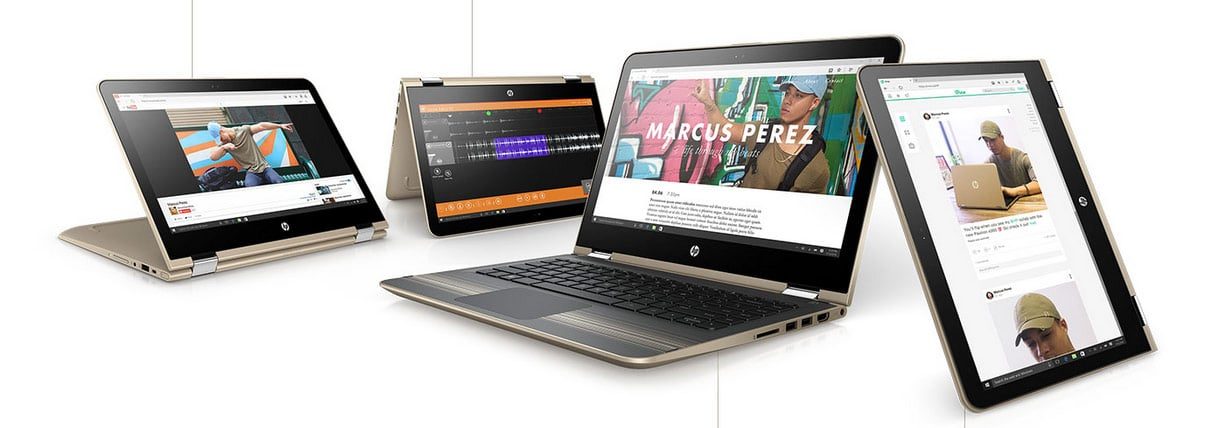
The Pavillion x360 11 gets an IPS screen and a larger battery, but can only be configured with Celeron and Pentium processors
Mid-range 2-in-1 laptops
In this section, you’ll find a larger selection of recommended 13 to 15-inch convertibles that sell for between $500 to $1000 and the time of this update.
Full-size convertibles with 15-inch screens
While I primarily prefer compact 2-in-1 devices that are more comfortable to use in tablet mode, I know that many of you would rather get a full-size computer with a 15-inch display, the kind that can fit all your info on the screen without making it too small, or the kind that accommodates a spacious keyboard, full-size ports, and a balanced hardware platform.
Most manufacturers offer mid-priced 15-inch convertibles these days, and we’ll list some of the better modern options down below:
- Dell Inspiron 15 7000 – 15-inch convertible with FHD/UHD touchscreen; metal build; Core U hardware and optional Iris Xe Max graphics; 53 or 68 Wh battery; updated design and fairly portable, at 2kg/4.4 lbs;
- HP Envy x360 15 – 15-inch convertible with FHD/UHD touchscreen; metal build; Core U hardware and up to MX450 graphics, or AMD Ryzen hardware; 51 Wh battery; compact metallic build, weighs 2 kg/4.4 lbs;
- HP Pavilion x360 15 – more affordable alternative, with partially plastic construction, lower-quality screens, and smaller 41 Wh battery; weighs 1.9 kg/4.2 lbs – only an option on a more limited budget;
- Lenovo Flex 15 – 15-inch convertible with FHD touchscreen; partially metal build; Core U hardware; 52Wh; weighs 2kg/4.4 lbs; slightly older hardware, but competitively priced;
- Lenovo Yoga C740 15 and Yoga 7i 15– 15-inch convertibles with FHD touchscreens; premium metallic build; Core U hardware; 60 Wh battery; 1.9 kg/4.2 lbs; barely available for under $1000.
There are also a couple of other premium options that sell for $1000++, which we’ll discuss in a further section.
Among these, the Lenovo Flex 15 and the HP pavilion X360 are the value picks for those of your shopping at a lower budget. You’ll somewhat sacrifice on the design and build quality, and you won’t get any of the excellent screen options available with the higher tier options, but these are still fair everyday laptops in their price range.
You won’t go wrong with any of the others if you’re willing to spend a little extra. Each have their own share of pros and quirks, though, so make sure to narrow them down by watching and reading some detailed reviews. Among them, the HP Envy x360 stands out as one of the most powerful 2-in-1 laptops on the market, with either an Intel/MX450 or an AMD Ryzen 4000 configuration, while the Dell Inspiron 15 and the Lenovo Yoga C740 and Yoga 7i are balanced options with solid screen options, nearly impeccable craftsmanship, and larger batteries.
Mid-size convertibles with 13-14 inch screens
There’s a vast option of hybrids in this segment, from all the important manufacturers, and we’re only going to list some of the better choices with modern specs and features down below. First, the 14-inch models:
- Asus VivoBook Flip 14 – 14-inch FHD 250-nits touchscreen; part metal build and good IO; Core U/Iris Xe Max or AMD Ryzen hardware; 42 Wh battery; weighs 1.5 kg/3.3 lbs;
- Dell Inspiron 14 5000 – 14-inch HD/FHD screen options; part metal build and good IO; Core U hardware; 40 Wh battery; weighs 1.55 kg/3.4 lbs;
- HP Pavilion x360 14 – 14-inch FHD 250 to 400-nits screen options; more affordable option with mostly plastic construction, Core U hardware and smaller 44 Wh battery; weighs 1.64 kg/3.6 lbs;
- Lenovo Flex 14 – 14-inch FHD 300-nits touchscreen; part metal build; Core U hardware; 52Wh; weighs 2kg/4.4 lbs; slightly older hardware, but competitively priced;
- Lenovo Yoga C740 14 – 14-inch FHD 300-nits touchscreen; premium metallic build; Yoga keyboard and limited IO; Core U hardware; 60 Wh battery; 1.4 kg/3.1 lbs;
Most of these are affordable hybrids with part-metal/part-plastic constructions, slightly larger formats, mid-range screen options, and smaller batteries. The VivoBook steps out as the most powerful model here and is among the most affordable models as well, but also gets the poorest quality display.
On the other hand, the Yoga C740 14 is the exception in this class, the only higher-tier product with a metal build, smaller format, and larger battery. It’s also surprisingly well-priced in most regions.
And here are the more compact and portable 13-inch alternatives:
- Asus ROG Flow X13 – convertible 360-degrees format, 13-inch 16:10 touchscreen, powerful AMD Ryzen 9 + RTX 4000 hardware, 75 Wh battery, weighs 1.3 kg/3 lbs;
- Asus ROG Flow Z13 – tablet format, 13-inch 16:10 touchscreen, powerful Intel Core i9 + RTX 4000 hardware, vapor chamber cooling, 56 Wh battery, weighs 1.2 kg/2.7 lbs;
- Dell Inspiron 13 7000 – 13-inch FHD/UHD touch screen options; compact metallic build; clean design; good IO; Core U hardware; 53 Wh battery; 1.28 kg/2.81 lbs;
- HP Envy x360 13 – 13-inch FHD 300-nits touchscreen; compact metallic build; good IO; Core U with optional MX450 or AMD Ryzen hardware; 51 Wh battery; 1.3 kg/2.9 lbs;
- Lenovo Yoga C640– 13-inch FHD 300-nits touchscreen; compact metallic build and design; Yoga keyboard and miniaturized IO; Core U hardware; 60 Wh battery; 1.35 kg/3 lbs;
- Lenovo ThinkPad L13 Yoga – 13-inch FHD 300-nits touchscreen; ThinkPad build, design, IO, and inputs; Core U hardware; 46 Wh battery; weighs 1.4 kg/3.2 lbs.
Among these, the Envy X360 13 is the obvious choice if you’re interested in faster performance within this compact format, as already mentioned in a previous section where this earned our best mid-range convertible title.
The others are pretty solid options as well, though. The Yoga C640 is the most compact and longer-lasting, the ThinkPad L13 Yoga offers the sturdy ThinkPad build and ample IO, and the Inspiron is the lighter option and the only one that can be specced with a UHD display, if that’s something that might interest you.
This section gathers the best hybrid laptops available in stores right now. Modern specs and features, awesome screens, large batteries, premium materials, and solid craftsmanship are some of their selling points, just don’t expect them to come cheap.
–updating
Full-size 2-in-1s with 15 and 17-inch screens
First off, there’s a very small market for 17-inch hybrid laptops, and for a good reason, as these are big and chunky and hardly usable in tablet mode.
Nonetheless, if that’s what you’re after, the Dell Inspiron 17 7000 is the only option worth considering in this minuscule niche. It packs a big battery, Core U hardware + optional Nvidia MX350 graphics, and a 17-inch QHD+ touchscreen with tiny bezels and pen support, all tucked inside a premium metallic chassis, but it still weighs about 2.4 kg (5.4 lbs), so is not the most comfortable laptop to lug around or hold in tablet mode.
As for 15-inchers, there are a couple of those to choose from:
- HP Spectre x360 15 – convertible; compact premium design and construction; 15.6-inch 16:9 touchscreen, up to 4K AMOLED panel; Core H hardware + GTX 1650Ti MQ graphics, 73Wh battery; weighs from 1.9 kg/4.25 lbs;
- Lenovo Yoga 9i 15– convertible; premium design and metallic construction; 15.6-inch 16:9 touchscreen, up to UHD IPS 500-nits panel; up to Core HK hardware + GTX 1650Ti graphics, 63.5Wh battery; weighs from 2 kg/4.4 lbs;
- Microsoft Surface Book 15 – detachable; premium design and magnesium construction; 15-inch 3:2 touchscreen, high-res; Core U hardware + up to GTX 1660Ti MQ graphics, 22+ 63Wh batteries; weighs from 1.95 kg/4.2 lbs;
All these are interesting in their own ways.
The Spectre x360 is the most compact and portable of the bunch, among the most beautifully designed, and the only one that can be specced with a 4K AMOLED screen on the highest-tier configurations. Specs-wise, this is on par with the competition, but the performance isn’t impressive, due to conservative power profiles that favor thermals and low noise over speed, and nor is battery life if you opt for that OLED screen.
Bottom point, the Spectre x360 15 should be a good pick for everyday use if you don’t mind spending extra for a premium 2-in-1 ultrabook, but if you also plan to run demanding workloads or perhaps games on your computer, this might not cut it for you.
The Yoga 9i is a newer launch at the time of this update, so we can’t yet properly comment on how it performs and behaves with actual use. It does follow up on the solid Yoga C940 from 2019, though, so I’d expect it to be a well-polished product and solid performer for this class, as well as competitively priced. For most, this should be the better-balanced product in this section.
The Surface Book 15, on the other hand, is by far the most interesting product here, but also by far the most expensive. This is a unique detachable 2-in-1: the screen can be used as a standalone tablet, or can be hooked up to the main chassis for laptop mode.
For this to happen, the processor, some of the hardware, and a smaller 22Wh battery are embedded within the screen half, underneath the display, while the dock houses an optional dGPU and the larger 63Wh main battery, as well inputs and ports. That’s why the Surface Book is only powered by a Core U platform, so not as powerful as the other options in this segment.
That’s unfortunate, as the Surface Book is meant to be a creator-laptop, with the detachable screen with pen support and the panel’s tall 3:2 aspect ratio that can fit plenty of content on it. However, despite these, the limited Intel Core U hardware platform makes this a tough choice for serious workloads, and might steer some of you away, despite this product’s other solid traits, such as the excellent inputs and build quality, or the long battery life. So if you’re primarily looking for performance in this form-factor, this Surface Book is not for you either.
This subsection includes the top-tier 12 to 14-inch thin-and-light laptops with convertible screens, the prime choices if you’re primarily interested in the best features in a compact shell, and don’t mind spending $1000++.
First off, here’s a quick list of more “affordable” options that sell for only a little over the $1000 mark:
- Acer Spin 5 – mid-range convertible; 13.5-inch 3:2 2K touch 300-nits; metallic build; Core U hardware; 55 Wh battery; 1.2 kg/2.6 lbs;
- Asus ZenBook Flip 13 – mid-range convertible; 13.3-inch FHD touch 400+ nits; compact metallic build; Core U hardware; 67 Wh battery; 1.28 kg/2.8 lbs;
- Lenovo ThinkPad X13 Yoga – mid-range business convertible; 13.3-inch FHD IPS/OLED up to 500-nits touchscreen; ThinkPad build, design, IO and inputs; Core U hardware; 50 Wh battery; weighs 1.3 kg/2.85 lbs.
I’m not entirely sold on any of these, and here’s why. The ZenBook is a compact, snappy, and well-priced 2-in-1 laptop for daily use, is well built and includes a big battery, but only gets a mid-level display and a rather cramped keyboard, as you’ll find out from our detailed review. The Spin 5 is a more comfortable typer and a very light product, but includes a smaller battery and uses PWM for that otherwise amazing 3:2 display, so is not an option for those of you sensitive to flickering.
That brings us to the X13 Yoga, which is the better-balanced product here, but also the heaviest of the three, packs the smallest battery, and gets the most expensive once specced up to a higher-tier configuration and the upgraded OLED screen.
With these out of the way, here’s the list of money’s no-object premium 2-in-1s:
- Asus ZenBook Flip S Evo – premium convertible; 14-inch UHD OLED touch 500+ nits; compact metallic build; fair IO; Core U hardware; 67 Wh battery; 1.22 kg/2.7 lbs;
- Dell XPS 13 2-in-1 – premium convertible; 13.4-inch 16:10 FHD+/UHD+ IPS touch 500-nits options; compact metallic build; limited IO; Core U hardware; 52 Wh battery; 1.32 kg/2.9 lbs;
- Dell Latitude 7400 – premium business convertible; 14-inch FHD IPS touch 300-nits; clean design; good IO; Core U hardware; 52 Wh battery; 1.36 kg/ 3 lbs;
- HP Elitebook Dragonfly – premium business convertible; 13.3-inch FHD/UHD IPS touch, up to 1000-nits; ultracompact metallic design; good IO; Core U hardware; 56 Wh battery; 1.15 kg/ 2.55 lbs;
- HP Spectre x360 13 – premium convertible; 13.3-inch FHD/UHD IPS touch 400-nits options; ultracompact metallic build; fair IO; Core U hardware; 60 Wh battery; 1.3 kg/2.88 lbs;
- HP Spectre x360 14 – premium convertible; 13.5-inch 3:2 2K IPS/OLED touch 400-nits options; compact metallic build; fair IO; Core U hardware; 66 Wh battery; 1.34 kg/2.95 lbs;
- Lenovo Slim 7i Carbon – premium convertible; 13.3-inch IPS; ultra-compact premium build and design; Yoga keyboard and miniaturized IO; Core P hardware; 50 Wh battery; 1 kg/2.2 lbs;
- Lenovo Yoga 9i – premium convertible; 14-inch OLED; compact metallic build and design; Yoga keyboard and miniaturized IO; premium speakers; Core P hardware; 75 Wh battery; 1.4 kg/3.2 lbs;
- Lenovo ThinkPad X1 Yoga – premium business convertible; 14-inch FHD IPS 500-nits options; ultracompact ThinkPad build and design, but uncompromised IO and inputs; Core U hardware; 51 Wh battery; weighs 1.35 kg/3 lbs.
It’s hard to go wrong with any of these.
The XPS 13, Spectre x360 13, and the Yoga 7i Evo are all excellent consumer ultrabooks, with friendly designs and comfortable inputs, solid screen options, and snappy everyday performance. The Spectre has been my go-to recommendation in this class for years now, but the latest Dell and Lenovo models have stepped up their game from their predecessors, and right now these three are neck in neck.
Choosing one over the other depends entirely on your preference and local prices, but make sure to read detailed reviews before jumping to conclusions, as each of these still have their quirky particularities that you’d have to accept.
The newer Spectre x360 14 and the ZenBook Flip S are both available with OLED displays, if that’s what you’re after, as well as pack the latest gen hardware specs and largest batteries in this niche. The Flip S loses points with its cramped keyboard, though, and I’d expect the Spectre x360 14 to also catch plenty of attention with the front-speakers and its 3:2 screen. Sure, it makes the laptop larger overall than the ultracompact Flip S, but the tall screen greatly helps with everyday productivity.
As for recommended 2-in-1 business laptops, the HP Elitebook Dragonfly and the Lenovo ThinkPad X1 Yoga are the main contenders in this sub-section of professional hybrids, with the Dell Latitude 2-in-1 lagging behind in recent years.
The Elitebook offers a splendid 1000-nits display, excellent ultra-compact modern craftsmanship, and a larger battery, while the ThinkPad X1 Yoga is the pinnacle of ThinkPad business laptops, but slightly heavier and larger than the Elitebook, with its 14-inch format. Once more, choosing between these is up to you and their overall value in your market.
Wrap up – Best 2-in-1 laptops in 2025
These are the best 2-in-1 portable laptops and 2-in-1 ultrabooks that you can find in stores right now, either convertibles, tablets, or detachables. We’re constantly updating the list, adding new products as they hit the stores, and discarding the ones that become obsolete, so bookmark this article and come back when ready to make a new purchase.
Drawing the line on all these 2-in-1 convertibles, you’ve seen that the market offers a multitude of options these days, and they should cater to even the most specific of needs.
Generally speaking, though, a 2-in-1 Chromebook is what I’d primarily recommend for everyday use, especially when shopping on a budget, while the better Windows laptops start at around $600 and up, with the top-tier picks going for well over $1000. In that class, you’ll find a multitude of pristine ultrabooks, but also some full-size hybrids that can also handle workloads or games in your spare time. For the most part, though, if performance is what you’re after, you’ll probably find improved value with some of the standard clamshell notebooks of this generation, and this article is perfect for you to start your research from.
At the end of the day, you know what you want from your next computer and how much you’re planning to spend on it, that’s why the final decision belongs to you. Hopefully, this article has helped you figure out what is the best 2-in-1 laptop for your needs and budget, but if you need further advice, make sure to jump in with your comments and questions down below. I’m around and I’ll reply as soon as possible.

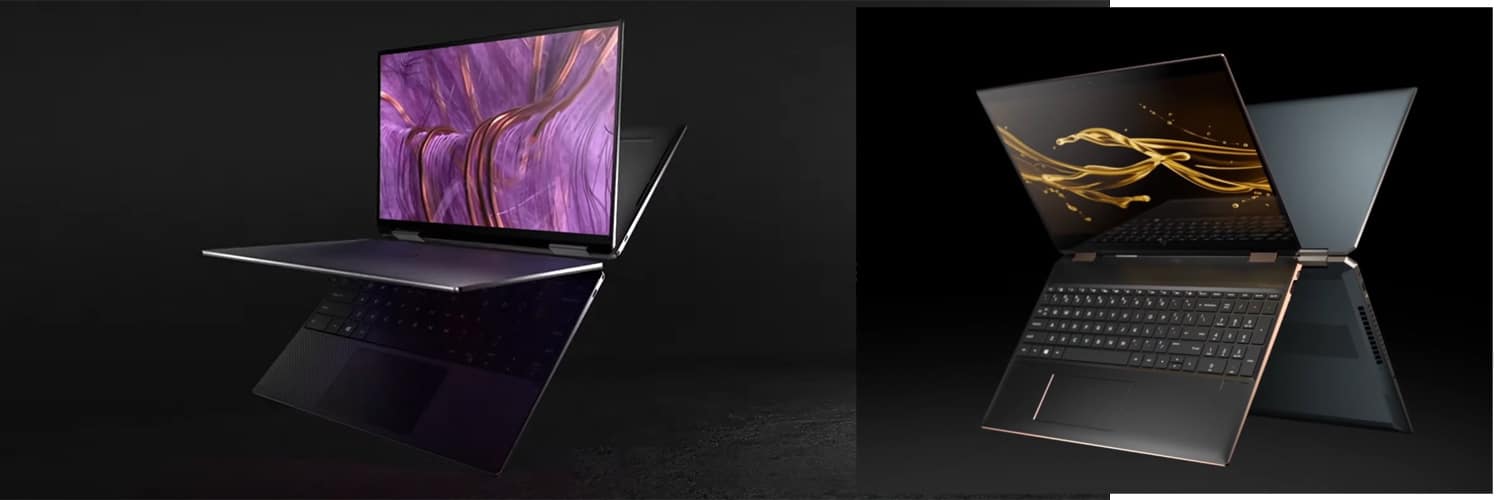
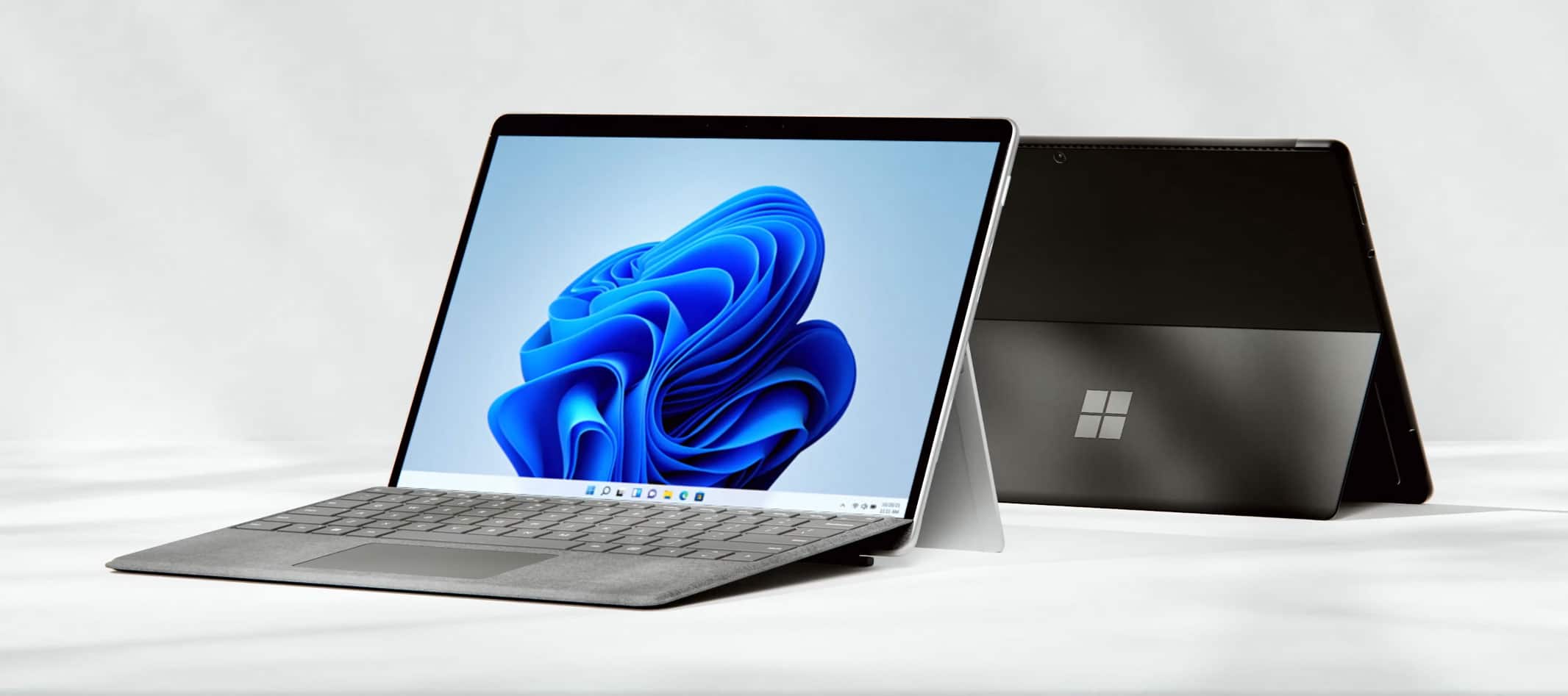

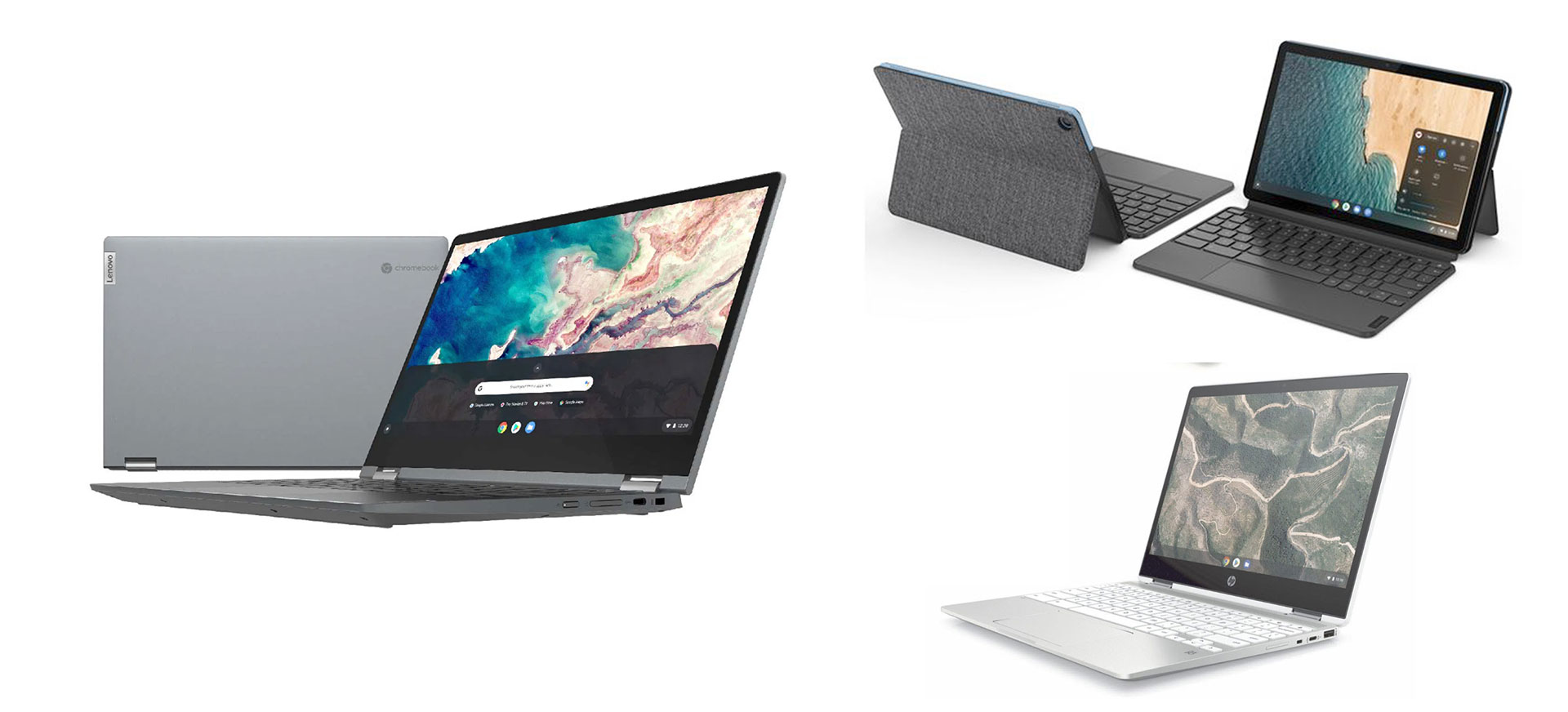
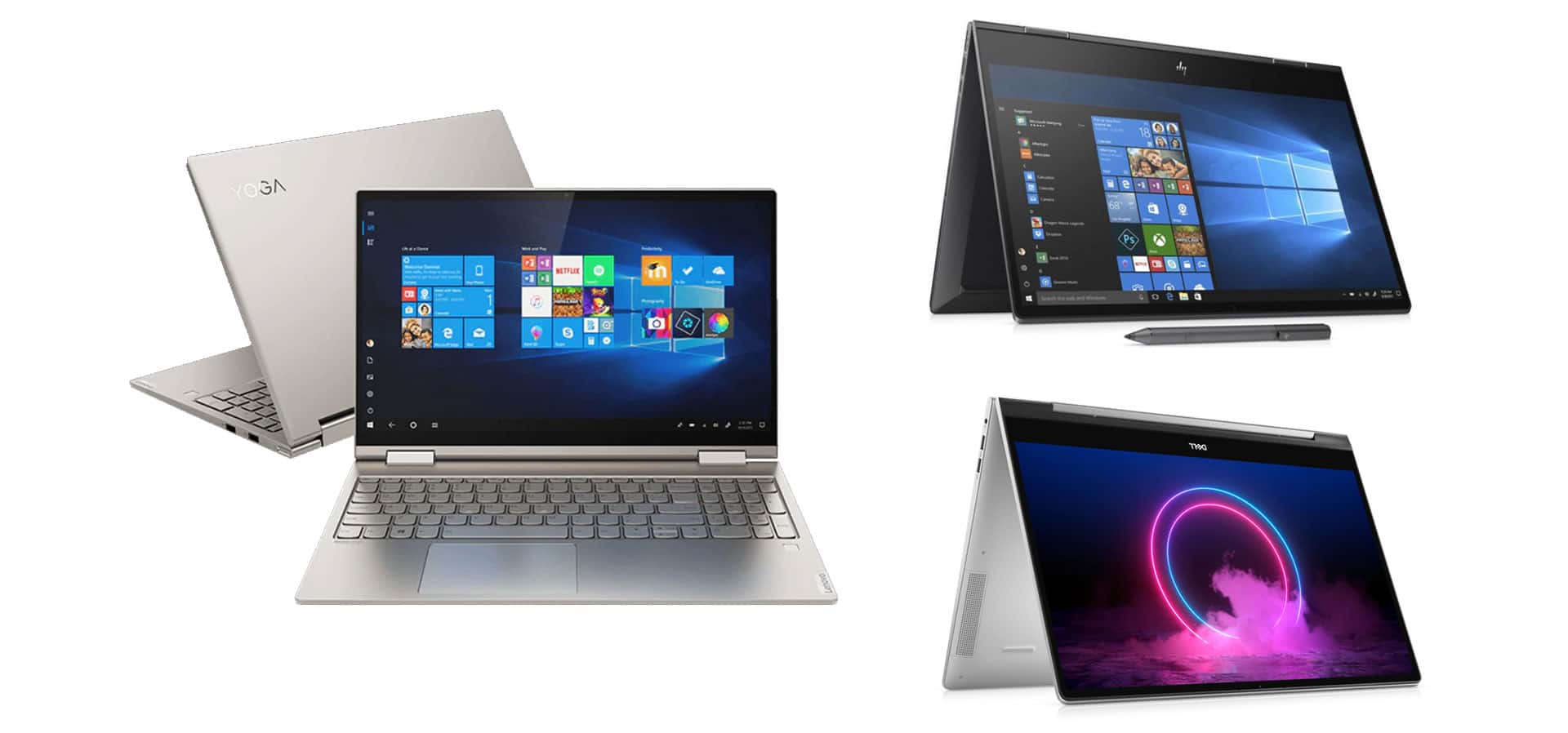
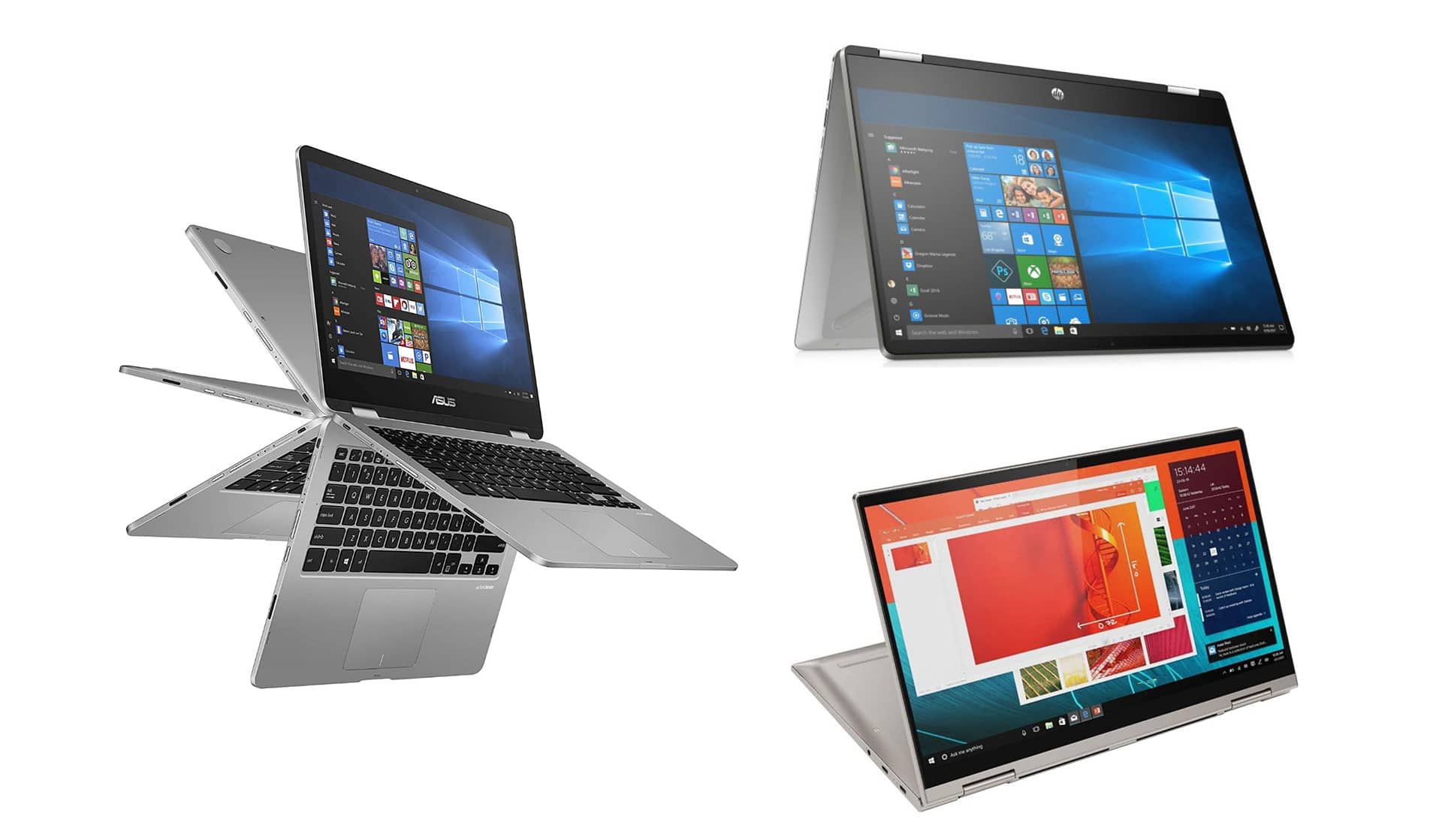

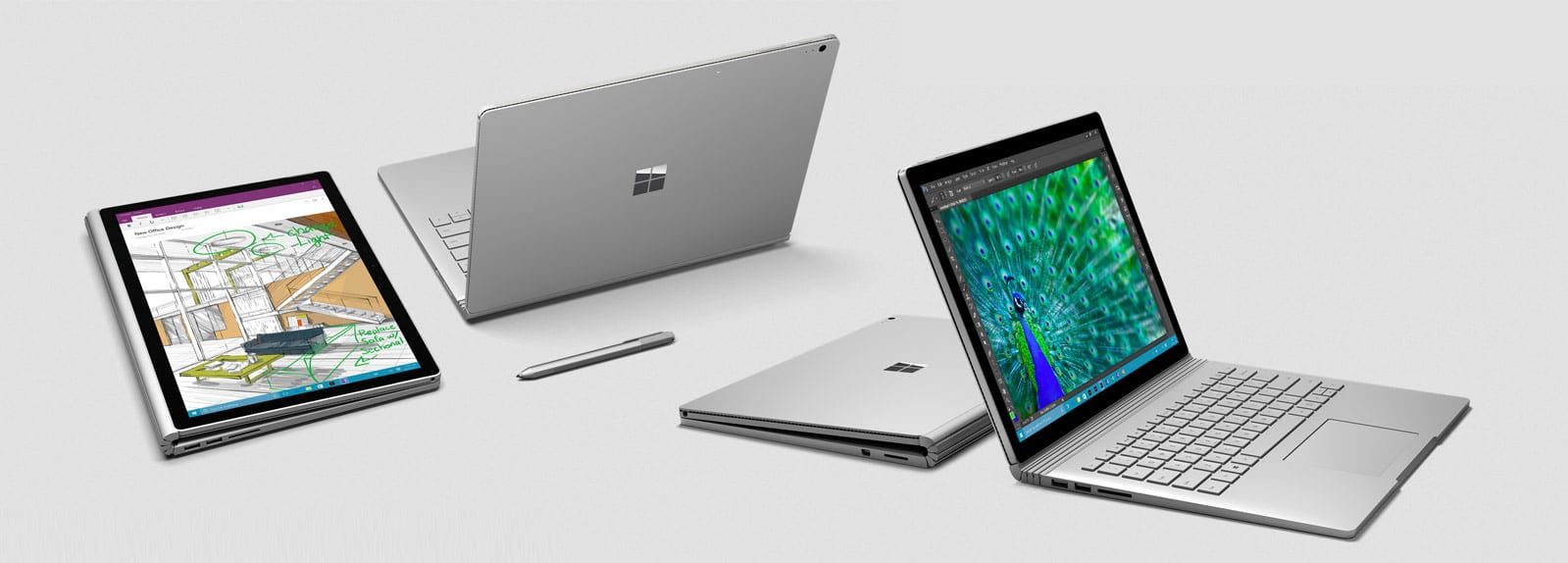


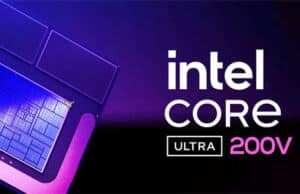
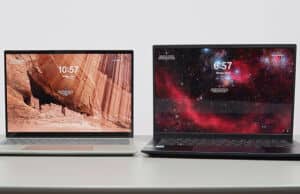
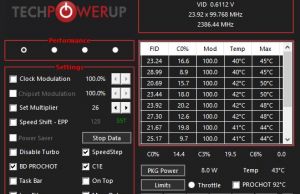
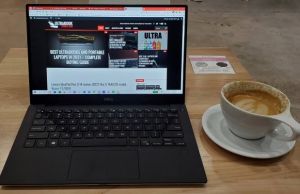
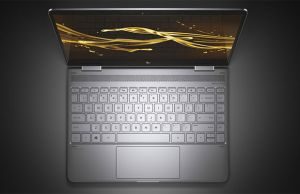




Jarod
July 13, 2017 at 9:30 am
Looking to buy a 2-1, but not sure which will best work for me. I started my career in over the road trucking so I would like one with a good battery life and a lot of storage for photos/video. A exterior hard drive could solve that for me I suppose. Will also use for web browsing and streaming videos. Would like the full keyboard option just if I need it but probably not something I'll use very often. Would there be a preferable on used for video editing. I plan on getting a dash cam to record my travels. Any suggestion greatly appreciated. Thank you. Also references as far as phone carriers for internet access currently have t-mobile not impressed plan on going to AT&T…
Andrei Girbea
July 13, 2017 at 11:53 am
Do you have a budget and screen size in mind?
Jarod
July 13, 2017 at 12:08 pm
Would like to spend under 1,200, cheaper better but don't want to sacrifice performance. Not too picky on screen size I guess bigger better but also battery life is good so a medium across the bored maybe 13-15 A lot of storage would be nice but can get a external hard drive to store photos/videos.
Lara
July 14, 2017 at 12:13 am
Hello! I have found your reviews very helpful in the search for a new computer. I am going to college and would like a convertible that would have the power to store my notes and be used frequently. I want a smaller and preferably matte screen. I also want pen support. Based off of your reviews and information, I think the toshiba portege z20t would be good, but I don't know enough about computers to make a good decision. Are there any similar options with the same specifications that might be better? Thank you very much.
DrZhivago
September 15, 2017 at 10:53 am
Hello ultrabookreview. You write that the Lenovo 900s does not support active pen. I think that is incorrect. In fact, I think the 900s, still, is one of few sub 1kg 2-in-1s 12"+. I have tried the skylake m3 and find the performance very satisfactory. It is as powerful as my 25w mobile core i7 from 2010, subjectively speaking. To have a very portable, silent 2-in-1 must be appealing to certain groups.
osnat
October 21, 2017 at 3:50 pm
Hi, Because this is the 2in1 I lust after I noticed these two points (no need to post this comment on your site). for HP Spectre 360 15.6": 4,4 lbs = ~2 kg (original copy 1kg – I wish!) and a paragraph below: it isn't cheap et al. (original copy says – it is cheap – though I am sure no one would believe it).
love dreaming through your reviews.
thanks!
novitrip
January 26, 2018 at 4:20 am
Thanks for this article.
right now i have been using asus transformer book t100ta for almost 4 years. it is still performing well, except for the tight harddisk space. i'm planning to change this device and have been interested with lenovo yoga book.
is lenovo yoga book a good alternative for my device right now? i am using my device mostly for typing articles and delivering presentation.
thanks before.
Farah
May 2, 2018 at 12:29 pm
Hello,
Thanks so much for all of this work on all these posts, it is really appreciated :)
I want to ask for your suggestion on a new purchase, please. I'm looking for something (netbook/ultrabook/hybrid/macbook air-like) that is:
– around 1 kgs
– around $600
– runs Office 10
– has at least one USB
Extras that i would love:
– has backlit keys
– can be charged via USB
I'll be mostly using it during work so i can surf and work on Word / PowerPoint.
I'm curious to see if there's any thing, since most of my finds are 1.3 kgs or are over $1000.
Thanks so much for your consideration,
Farah
Andrei Girbea
May 3, 2018 at 12:14 pm
Well, not really. THere are very few convertibles around 1 kg, and they are expensive (something like the Zenbook UX370). If you're willing to compromise on the weight, you should find some slightly older devices within your budget, like the Asus Zenbook UX360CA / UX360UA, as well as some from Lenovo and Dell
Farah
May 13, 2018 at 2:09 pm
Thank you so much for the reply – much appreciated.
One
January 23, 2019 at 7:03 am
I'm suprised there's no mention about x1 tablet, i think the best surface pro clone. The only one in its class with 2 usb c-thunderbolt 3 complete with keyboard and pen. The only con is the battery life
Cris
February 2, 2019 at 10:43 am
So..nothing worth mentioning here about Panasonic cf-ax3 or Panasonic cf-mx4? Would thing they at least on par with the some that made the list..
Palitha Harischandra
February 19, 2019 at 4:22 pm
Hi Andrei, a super review of items of portable tech. Thanks. I have been for a long time now looking for a laptop: Small, 15 or 17" with FHD, UFHD screen. With a full numeric keypad and above all a very quiet or fanless model as can't stand noise! Can you recommend one for me please which also has good specs and a decent make. Thanks
Maria
July 10, 2019 at 6:06 am
I love love love my Dell Inspiron 3153 11.6 inch 2 in 1. It has been pushed to its limits and I have to replace it. Having the hardest time finding on similar in specs and design. The new Dell Flagship but it was ridiculously slow and the plastic case felt like a toy. The 3153 doesn't seem to be like any of the other dell 11.6 I see on their site – in specs or materials.
What model would be the equivalent?
Online searches have only confused me more. I wish they still made the 3153, I would buy it again in a minute.
Andrei Girbea
July 10, 2019 at 5:07 pm
I'd probably go with some of the newer 13-inch convertibles, they're about the same size as that older Dell, but with a bigger screen (and more expensive). Not sure if these are within your budget, but you can look at the Lenovo Yoga 730, Dell XPS 13 2-in-1 or Asus ZenBook Flip 13
Valentin
January 5, 2020 at 2:50 am
Is there a review of the Hp Dragonfly in sight? I‘m currently deciding if I should get a Thinkpad (X1 Carbon) once again or if I should try something a little different, and the Dragonfly looks quite interesting. What do you think about these two devices in comparison?
Andrei Girbea
January 5, 2020 at 1:20 pm
I haven't touched the Dragonfly and it's not in the works, so I can't offer a real answer. We don't have great contacts with HP and most of their products are not widely available over here.
I'd look into performance in demanding loads, if that's of interest to you. It's one area where the X1 Carbon tends to struggle due to high thermals. There are few reviews of the Dragonfly so far, but Lisa at Mobiletechreview has a good one on Youtube.
The rest should be mostly based on typing experience, battery life and screen quality, as well as your personal design preference. I for one like the classic Thinkpad design, but I'm not that much into their current keyboards, that's why my main choice in this niche would be either a Dell XPS 13 or Latitude 14 7000. HP are doing a good job, based on my experience with the Spectre x360, so I'd consider the Dragonfly as well. But like I said, can't say much about it without ever touching it.
Neels
August 15, 2020 at 2:51 pm
The heading says "Best 25 2-in-1 laptops and convertible ultrabooks in 2020", but I don't believe this has been updated in the last year at least. It still refers to old models of laptops and Nvidia 940M dedicated graphics is mentioned, without any mention of recent ultrabooks with MX150, MX250, etc. dedicated graphics. Very disappointing… thanks for wasting my time.
Andrei Girbea
August 16, 2020 at 11:58 am
You're right, this needs a proper update. Sry for the inconvenience.
Trini
September 13, 2020 at 8:46 am
Hi Andrei, could you please do a review on the Lenovo Yoga Duet 7i, whether it's worth the retail price, and how does it compare to other detachable 2 in 1s?
Jayden Andrew
December 8, 2020 at 11:25 am
I’m looking for a laptop just for drawing but I don’t know which one the best for that with the price under $500. Can you please help me?
Grace
December 10, 2020 at 1:43 am
hi, the Lenovo Yoga 7i Evo goes to 14" instead of 13.3" laptop. How do you think this Lenovo Yoga 7i Evo comparing to hp envy x360 13.3.
Thank you!
Andrei Girbea
December 10, 2020 at 3:50 pm
I haven't yet tested yet, so no idea. Should be competitive, Lenovo's laptops are solid in their classes in recent years
Matteo B
March 19, 2021 at 7:54 pm
I got the Spectre X360 14, with the OLED Display. It is an astonishing good laptop, not cheap, but it is full spec (except the RAM that cannot be more than 16 GB). I'm really happy with the product, even if coming from an Apple MacBook Pro, I miss a bit the cleanness of the design…but the functionality is top-notch.
Unfortunately, where I live at the moment (Italy), the only color available is plain silver, so the keyboard (that has a weird format for somebody used to a standard IT/EU layout, especially on the ENTER key) is quite difficult to be seen in a particular light situation, and i would have preferred the standard black color…
In the end i think it is the best compact convertible with Tiger Lake at the moment.
Jamie
April 19, 2021 at 10:52 pm
I came here to say the same as above. This is not suitable for 2021. The whole article is just sloppy with add ons thrown on here, there, everywhere and shows its an article OVER 5 YEARS OLD that just keeps having more added or deleted. And I'm not a very knowledgeable laptop/computer/2in1 type of person. So image someone who knows what they're talking about reading this. I'd be embarrassed. Delete this, do some research on modern 2021 qualifying devices, combine it with your already extensive knowledge, and write a good new article. This thing has been edited to its death. Come back to being a writer and I will gladly come back and follow. I really like this site and hope to see some fresh stuff to help me pick a new 2 in 1 type laptop. Hope this didn't sound harsh, I just believe you're able to do better. T.I.A.
Andrei Girbea
April 20, 2021 at 9:44 am
Jamie, the article has been updated over the years and perhaps you're right that a full write-up would make sense at this point, especially in some sections. Most of it is still up-to-date, just understand that there's always going to be a delay between articles such as this one and new launches. That's because we're a tiny project with very limited resources that have to go between reviews, coverage of new launches, and updating these older posts, so yeah, we're doing what we can. It's not like there are hundreds of us sitting around and not updating posts to your liking.
Nonetheless, I appreciate the feedback and will do what we can to step up our work! Just don't expect more than we can possibly do from us.
Leon Engel
December 10, 2021 at 5:45 pm
Hey Andrei, Thanks for your detailed article. I need a new laptop since my old one is 10yrs old has 4 gb ram and crashes in summer when its too or if I play a game and watch youtube at the same time.
I am searching for a Laptop that can handle Music software like Ableton, CAD programs and is good enough for playing league of legends. A good pen and screen for University uses is also something I need. Thats why I search for a convertible. I wont use another PC or anything in near future so I plan it to be my only device, supporting two screens at home and helping me in everyday Universitylife.
I don't know exactly how much power I need but 16gb RAM sounds reasionable. Also I need at least 14 inch screen but I prefer 15.
I would like to spend up to 1000 Euros (and more if neccessary)
I considered The Lenovo Yoga series, HP x360, Dell xps13 (or Macbook and Ipad but this will be to expensive and I don't want to be dependend on apple due their good marketing)
Btw. sorry for my english … i am a German
Andrei Girbea
December 11, 2021 at 11:07 am
HI.
If possible, I'd go with a recent AMD platform – Ryzen 5 5600U or Ryzen 7 5800U (faster multi-core CPU performance and better audio latency for your music production software). I'd also go with 16 GB of RAM and an OK screen. NOt sure what your options are over there, try to narrow things down based on these specs? It might be difficult to find an AMD convertible right now, and your budget at 1000 might be a little limited.
Larissa Ventura
October 4, 2022 at 8:09 pm
Hi, Andrei, tks for this excellent article! I´ve searched the page for the word "MONITOR" and it showed no results, so I came here hoping you could help me with your opinion. Im looking for a small / beautiful device (13.3 in max) that would attend two goals: 1) TO BE CONNECT TO A LARGER, CONFORTABLE MONITOR (so yes, it is a laptop but would be sitting quietly in my room 99% of the time, cause Im a writer and need some confort while sitting / looking to a screen) and 2) BE PORTABLE, SMALL AND LIGHT at the same time (sometimes I can travel with it – and BEAUTY is important… Hehe). Performance is desired, so I was looking for at least an i7 (no problems with AMD at all!), but I really dont know if Im dreaming too much… Yesterday I was comparing GALAXY BOOK 2 PRO 360 (the burgundy color made me cry, but I heard its trackpad sucks), so Im searching now for a few months and find it very hard to make a conclusion. This article is so important! Would you consider making one or two reccomendations for this particular case? Tks for your help!
Andrei Girbea
October 5, 2022 at 8:52 am
Hi. Every modern laptop can hook up to an external monitor, so that's not an issue.
You don't have to go for an i7 either, but I'd recommend something with 16 GB of RAM as much as possible.
You haven't mentioned if it has to be a convertible 2-in-1 format or what's your budget. YOu also mention you wanted something small, so I'd reckon you're looking for a 13-14 inch design, and not something bigger?
Meesha
February 15, 2023 at 5:22 am
Thank you for this review. I admit I'm somewhat underwhelmed. I was waiting for 2023 laptops hoping lenovo, asus, msi or samsung would finally come out with a 2 in 1 under 4 lbs with touchscreen and pen support and 32 gb of ram and decent graphics card. 14 or 15" and I love the idea of a number pad in the touchpad. Also want wifi 6e and ir hello camera.
No luck…
Also in a part of your review you mention the limited U core hardware but all the laptops in your premium money is no object have the U core hardware.
I think that is what the asus space edition (which actually met my requiremnts) had and the only reason i did t get that was because of the limited battery life of 2 to 4 hours.